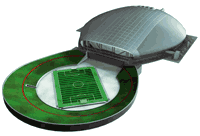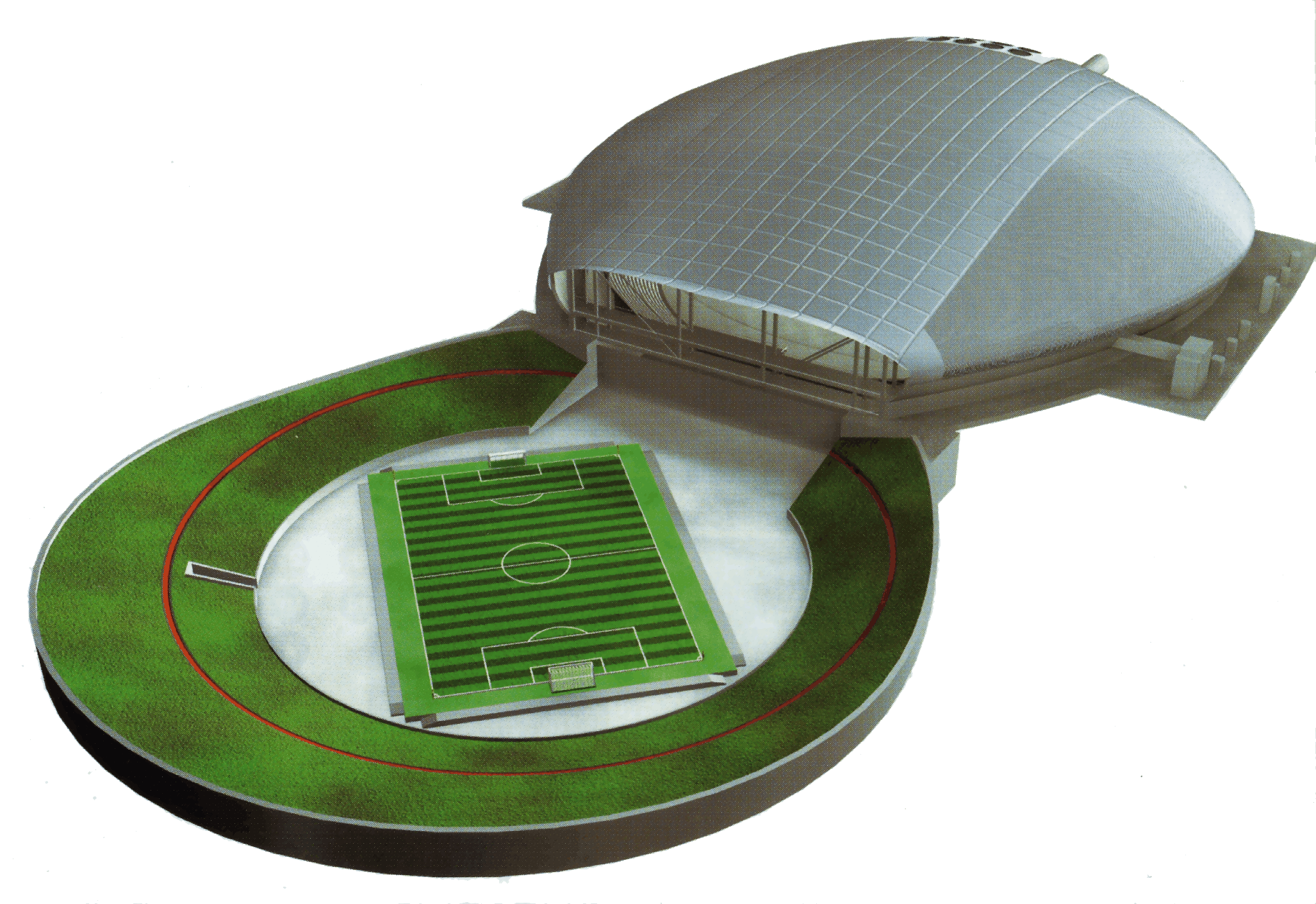Sapporo Dome
Sapporo City, Hokkaido Prefecture
|
Sapporo is the northernmost large city in Japan, and as such, it faces unique difficulties related to the weather. The city is located on the island of Hokkaido, about two hours by plane from Tokyo. It is a very scenic location, in the heart of a broad valley at the base of beautiful mountains. Sapporo has played host to the 1972 Winter Olympic Games, and is a popular winter sports mecca for tourists from the big cities, who are looking for an escape from the hustle and bustle. Located on Japan's northern frontier, Sapporo is a relatively new city, founded only about 150 years ago, though in population, it is Japan's fifth-largest metropolis. Since it is a relatively new city, Sapporo is laid out in a rectangular grid, with broad avenues, unlike the narrow, meandering lanes of most other Japanese cities. Amidst the pleasant fields and rolling hills of suburban Sapporo is perhaps the most technically advanced feature of the 2002 World Cup -- Sapporo Dome Stadium. Because of its location, in the chilly northern regions of the country, Sapporo has much longer winters and heavier snowfalls than any other major city in Japan. Because of the severe winter weather, it is difficult to schedule soccer matches during the months of November-April. |
 |
This creates quite a problem for sports teams in the area. Consadole Sapporo has an energetic and loyal fan club, but their football season is naturally limited by weather conditions, since cold weather tends to discourage fans, and it is impossible to play football in deep snow. Even today, the schedule is adjusted to ensure that Consadole plays most of its matches in March and early April at away venues, but to help make home matches a bit less daunting to schedule, the city built a stadium that would reduce, even if it cannot eliminate, the problem.
 |
In preparation for the 2002 World Cup, Sapporo built an all-weather stadium that can hold sporting events at any time of year. The only problem is that natural grass will not grow in an enclosed stadium, and J.League rules specify that all matches be played on natural turf. To solve the problem, the architects of Sapporo Dome Stadium came up with a truly remarkable feat of engineering. Rather build a roof that could open and close, to let light into the stadium, they decided to build the pitch outside, in the sunlight, and move it into the stadium only when matches are being played. As the graphic on this page shows, the stadium actually has a movable pitch, which is elevated by a cushion of compressed air and moved into the stadium prior to a match. The stands then rotate so that they are as close to the pitch as possible. |
Even this magnificent feat of engineering does not solve the problem completely. If the pitch is too heavy, even the powerful motors that carry it indoors cannor function, so if more than a few centimeters of snow falls, the movable pitch becomes meaningless. Nevertheless, Consadole is now able to schedule matches in April and early December without too much risk of a cancellation, and the snowiest months of the year (January and February) are off-season. The Nippon Ham Fighters baseball team, which can play on artificial turf, is able to use the stadium year-round. And as the pictures below should indicate, it is a very beautiful venue for both football and baseball. Indeed, it was used as a venue for the World Cup.
| Sapporo Dome ("Hiroba") |  |
Capacity: 42,300 |
| Home Team: Consadole Sapporo | Completed: March 2001 | |
| Location: Sapporo City, Hokkaido, Japan | ||
| Building Area: 53,800 m2 | Total Floor Area:(Open Arena) 97,503 m2 | |
| Roof Diameter: 245 m | Stand Inclination: Max. 30 degree angle | |
| Building Structure: The soccer field is entirely covered by the dome, to prevent matches from being affected by unfavorable weather conditions like rain, snow or strong wind. The dome has two basement levels, four levels above ground, and a two-level penthouse, with the soccer field on the second basement level. |  |
|
Stadium Access |
 Click to enlarge |
 |
Ticket PricesAwaiting information on 2017 ticket prices |


